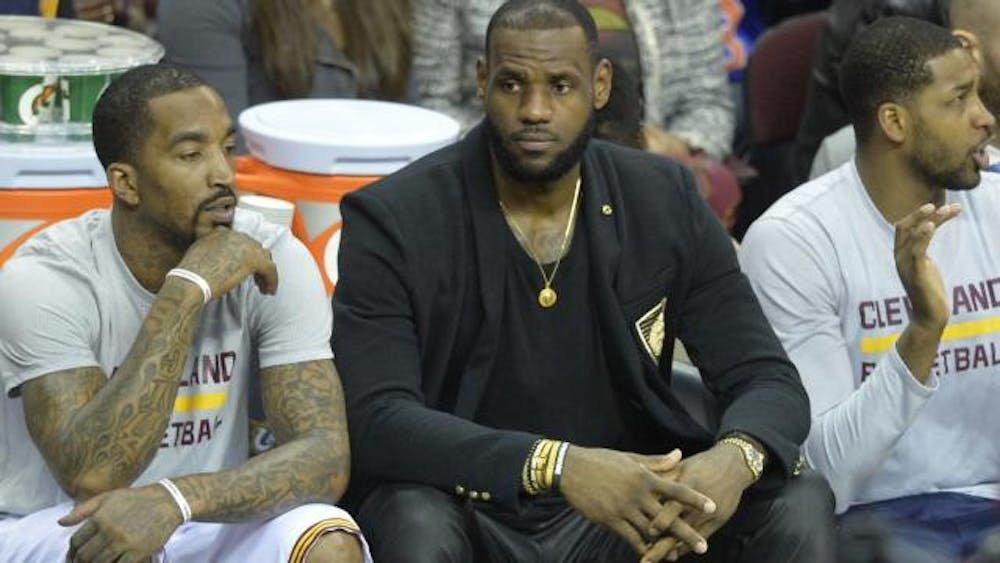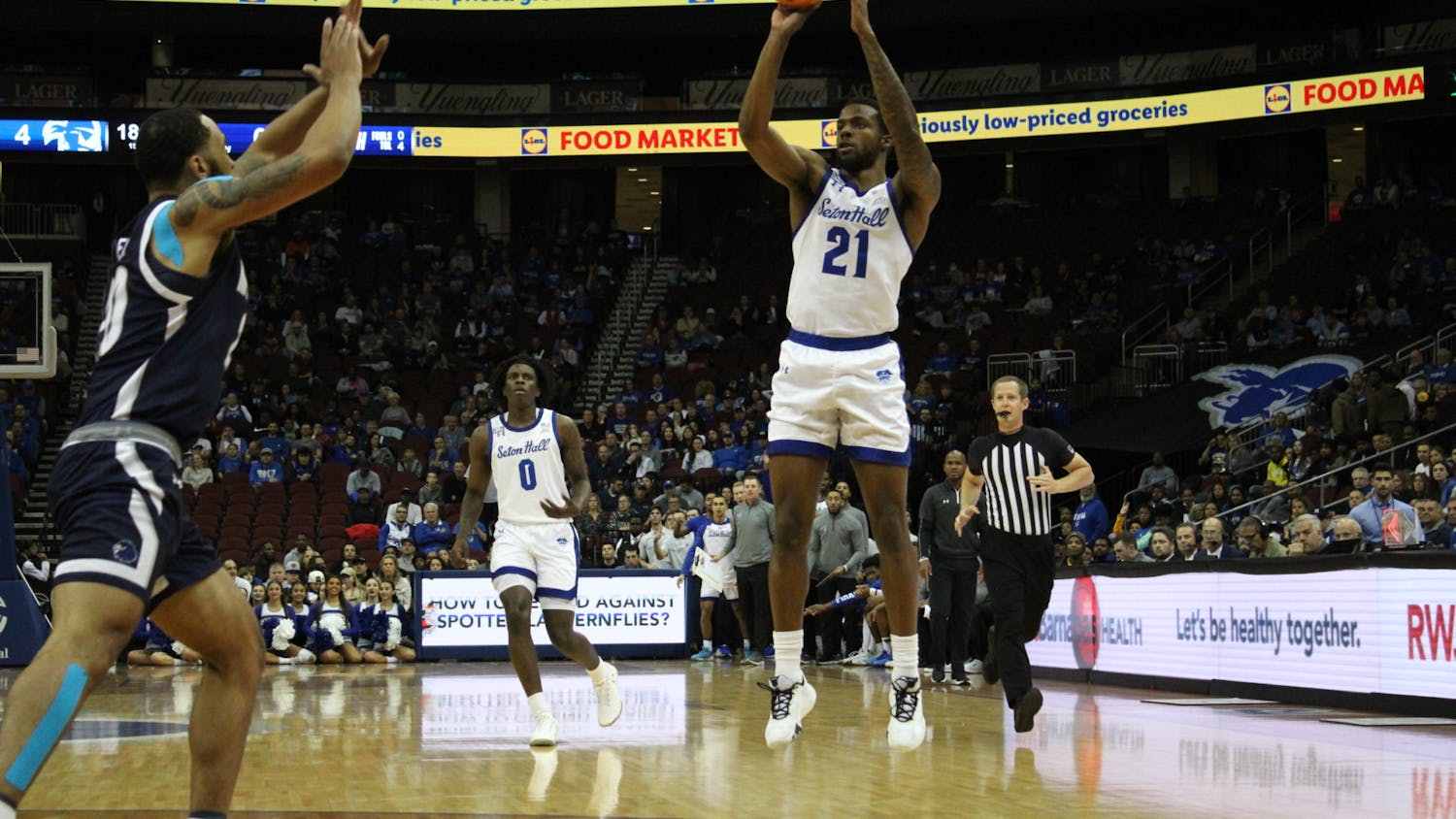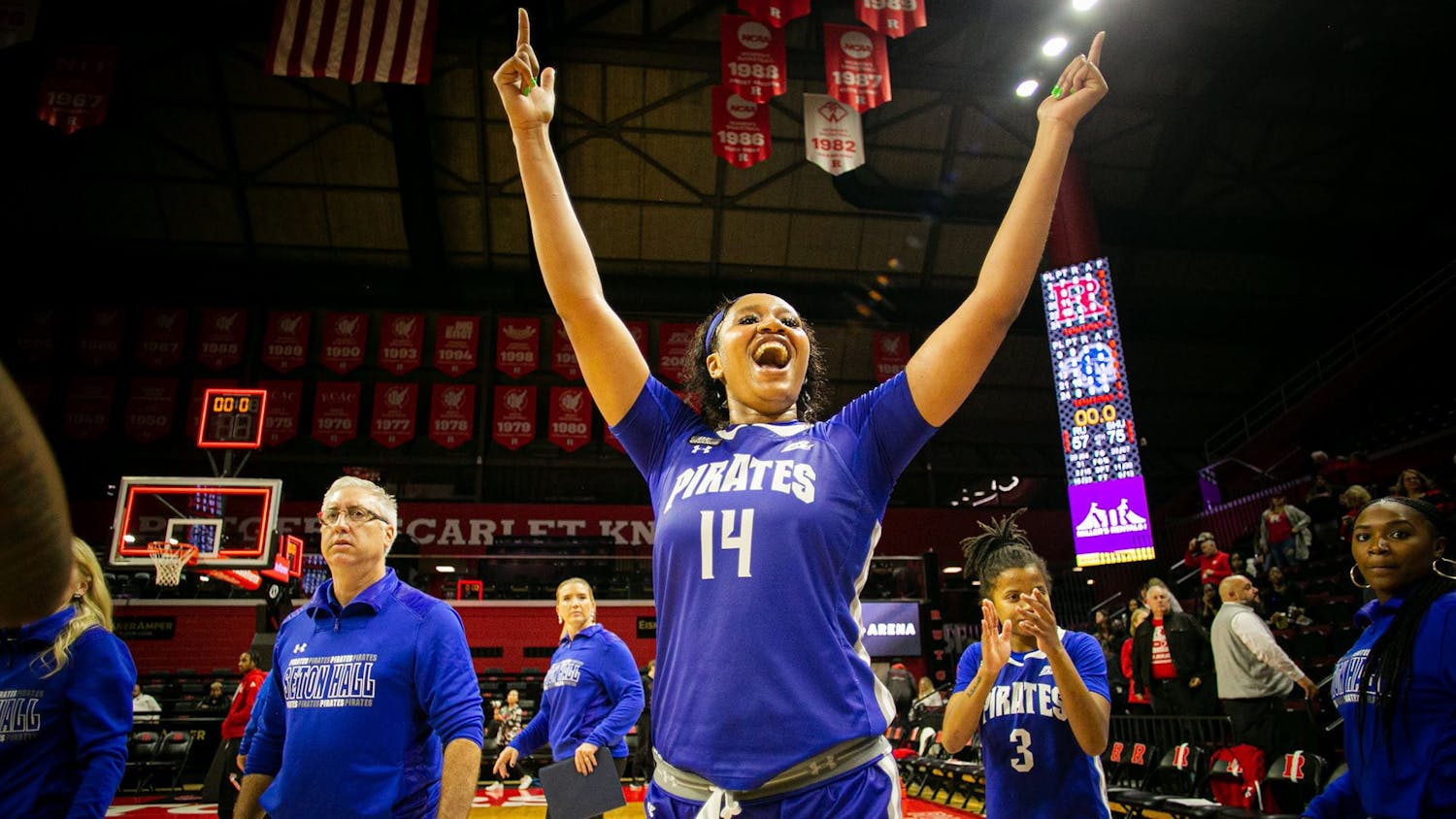On March 11, the Golden State Warriors touched down in Texas for a big matchup with the San Antonio Spurs, the team riding their coattails at the top of the Western Conference. The game was highly anticipated and was set to broadcast on national television. However, the draw of the game quickly evaporated, as Warriors head coach Steve Kerr elected to bench star players Stephen Curry, Klay Thompson, Draymond Green and Andre Iguodala for the game.
On March 18, history repeated itself as the Cleveland Cavaliers headed west to Los Angeles for a nationally televised showdown with the Clippers. What was expected to be a battle of two of the NBA’s best teams soon became something very different, as Cavaliers head coach Tyronn Lue decided to rest Kyrie Irving, Kevin Love and LeBron James.
[caption id="attachment_18325" align="aligncenter" width="640"] LeBron James (top) has rested five games this season. Photos via NBA.com.[/caption]
Kerr cited the extensive travel the Warriors had endured in recent weeks as the reason for the decision. Not helping with the attractiveness of the matchup was that Kevin Durant, Kawhi Leonard, LaMarcus Aldridge and Tony Parker were all out with injuries.
In Lue’s case, he benched Irving and Love due to nagging injuries, and also stated he sat James because he did not want him carrying the burden without the team’s other two stars.
Many fans were disgruntled with the teams’ decisions to sit their stars, as these were supposed to be premier matchups on the NBA schedule. Instead, they turned into unwatchable games. This prompted NBA commissioner Adam Silver to send a memo to all 30 NBA teams, calling it an “extremely significant issue,” according to ESPN.
The bigger issue here is that the NBA schedule is ridiculous. The Warriors’ in San Antonio was their eighth game in 13 days, with seven of those games being on the road. But that’s not all. Of those seven road games, five of them came against Eastern Conference foes on the opposite side of the country. Additionally, the Warriors had three back-to-back’s over that same stretch of games. All in all, the Warriors traveled about 10,000 miles in a 13-day stretch. That’s unacceptable.
For the Cavaliers, they had already had 11 back-to-backs on their schedule, with the game against the Clippers being the start of their 12th.
The NBA has a scheduling problem, and it’s nothing new. The discussion about limiting back-to-back’s on the schedule has been a relevant topic for years. Changes were made this season, as Silver reduced the total number of four-games-in-five-nights stretches significantly, from 70 to 27. This change has had an impact, as offensive efficiency has gone up this season, but it isn’t enough.
The Warriors and Cavaliers aren’t the only team to endure harsh schedules this season. Over a 27-day stretch from Jan. 6 to Feb. 2, the Houston Rockets traveled a total of 12,415 miles. By Dec. 15, the Denver Nuggets had already traveled 33 percent of their road schedule.
With these vicious travel schedules still prevalent in today’s NBA, it’s no wonder why teams are electing to rest their starters. Teams are showing they are focusing on long term goals instead of on one individual game.
How can this problem be solved? Could the NBA reduce the number of games per team from 82 to a more manageable total? Could the NBA season begin earlier? The NBA could take after the NHL, which typically begins play about three weeks prior to the NBA.
Whatever the NBA decides to do, the vicious travel that these NBA teams endure has to come to an end. It will be in the best interest of both the league and its 30 teams if the teams are at full strength each game and the league is able to showcase its best players night in and night out.
Matt Ambrose is a journalism major from Exeter, N.H. He can be reached at matthew.ambrose1@student.shu.edu or on Twitter @mambrose97.
LeBron James (top) has rested five games this season. Photos via NBA.com.[/caption]
Kerr cited the extensive travel the Warriors had endured in recent weeks as the reason for the decision. Not helping with the attractiveness of the matchup was that Kevin Durant, Kawhi Leonard, LaMarcus Aldridge and Tony Parker were all out with injuries.
In Lue’s case, he benched Irving and Love due to nagging injuries, and also stated he sat James because he did not want him carrying the burden without the team’s other two stars.
Many fans were disgruntled with the teams’ decisions to sit their stars, as these were supposed to be premier matchups on the NBA schedule. Instead, they turned into unwatchable games. This prompted NBA commissioner Adam Silver to send a memo to all 30 NBA teams, calling it an “extremely significant issue,” according to ESPN.
The bigger issue here is that the NBA schedule is ridiculous. The Warriors’ in San Antonio was their eighth game in 13 days, with seven of those games being on the road. But that’s not all. Of those seven road games, five of them came against Eastern Conference foes on the opposite side of the country. Additionally, the Warriors had three back-to-back’s over that same stretch of games. All in all, the Warriors traveled about 10,000 miles in a 13-day stretch. That’s unacceptable.
For the Cavaliers, they had already had 11 back-to-backs on their schedule, with the game against the Clippers being the start of their 12th.
The NBA has a scheduling problem, and it’s nothing new. The discussion about limiting back-to-back’s on the schedule has been a relevant topic for years. Changes were made this season, as Silver reduced the total number of four-games-in-five-nights stretches significantly, from 70 to 27. This change has had an impact, as offensive efficiency has gone up this season, but it isn’t enough.
The Warriors and Cavaliers aren’t the only team to endure harsh schedules this season. Over a 27-day stretch from Jan. 6 to Feb. 2, the Houston Rockets traveled a total of 12,415 miles. By Dec. 15, the Denver Nuggets had already traveled 33 percent of their road schedule.
With these vicious travel schedules still prevalent in today’s NBA, it’s no wonder why teams are electing to rest their starters. Teams are showing they are focusing on long term goals instead of on one individual game.
How can this problem be solved? Could the NBA reduce the number of games per team from 82 to a more manageable total? Could the NBA season begin earlier? The NBA could take after the NHL, which typically begins play about three weeks prior to the NBA.
Whatever the NBA decides to do, the vicious travel that these NBA teams endure has to come to an end. It will be in the best interest of both the league and its 30 teams if the teams are at full strength each game and the league is able to showcase its best players night in and night out.
Matt Ambrose is a journalism major from Exeter, N.H. He can be reached at matthew.ambrose1@student.shu.edu or on Twitter @mambrose97.

Comments




